“Capsule Endoscopy: Revolutionizing Non-Invasive Diagnosis”
“Imagine diagnosing complex gastrointestinal disorders without discomfort or invasive procedures—welcome to the era of capsule endoscopy!”
Introduction
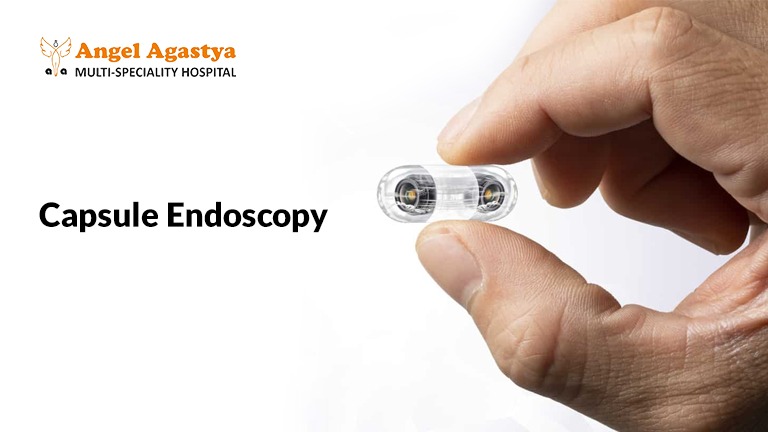
Medical diagnostics have made incredible strides in recent years, providing doctors and patients with advanced tools for identifying health issues. Traditional endoscopy, while effective, is often associated with discomfort and invasiveness. This has paved the way for innovations like capsule endoscopy, a revolutionary procedure that redefines how gastrointestinal (GI) disorders are diagnosed. Capsule endoscopy offers a non-invasive, patient-friendly approach that has become a beacon of hope for many. In this comprehensive blog, we’ll explore into what capsule endoscopy involves, its benefits, limitations, and how it compares with traditional diagnostic methods.
What is Capsule Endoscopy?
Capsule endoscopy is a state-of-the-art diagnostic procedure designed to visualize the small intestine using a tiny, pill-sized device. This capsule contains a miniature camera, a light source, and a transmitter. Once swallowed, the capsule travels through the digestive tract, capturing thousands of high-resolution images. These images are transmitted wirelessly to a recording device worn by the patient, usually a belt or a pouch.
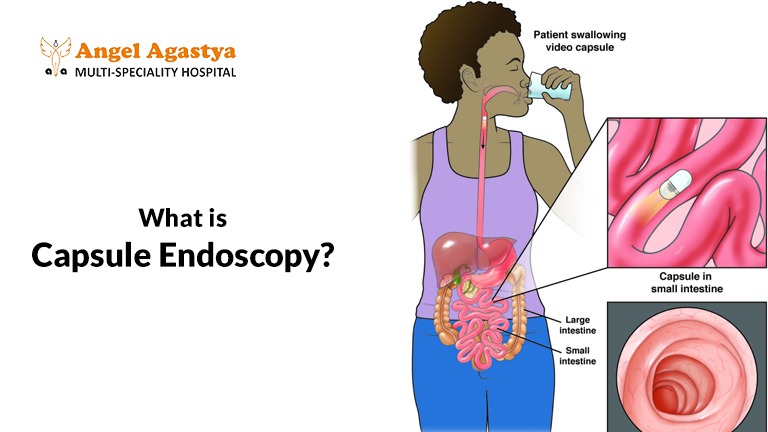
The procedure is widely recognized for its ability to examine areas of the small intestine that are difficult to reach using traditional endoscopy or colonoscopy. It plays a crucial role in detecting, diagnosing, and monitoring a range of gastrointestinal conditions.
How Does Capsule Endoscopy Work?
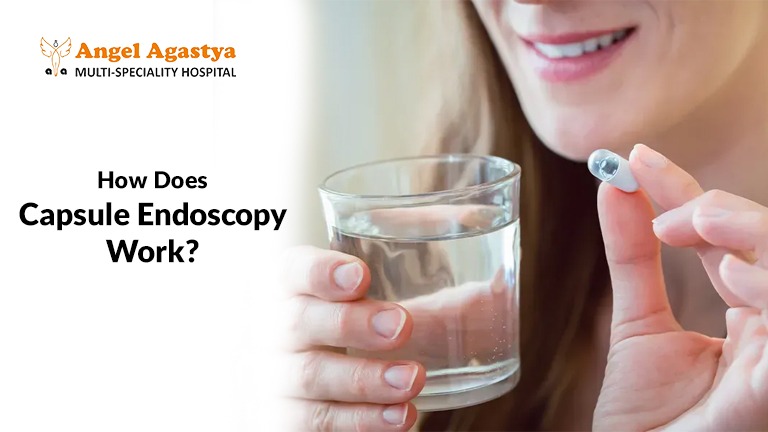
The process begins with a consultation where the doctor evaluates, the patient’s medical history and decides if capsule endoscopy is the right choice. Here’s a breakdown of the procedure:
- Preparation
Patients are advised to follow a specific diet, usually fasting, the night before the procedure. In some cases, they may need to take a laxative to clear the intestines, ensuring better visibility. - Swallowing the Capsule
The capsule, approximately the size of a large vitamin pill, is swallowed with water. - Monitoring the Journey
As the capsule travels through the GI tract, it captures and transmits images to the recording device. The process typically takes 8-12 hours, during which patients can resume most normal activities, although difficult and tiring activities should be avoided. - Data Analysis
After the capsule exits the body naturally, the recorded data is reviewed by a gastroenterologist to identify any abnormalities or issues. - Follow-Up
If abnormalities are detected, the doctor may recommend additional tests or treatments, such as traditional endoscopy or a biopsy.
Benefits of Capsule Endoscopy
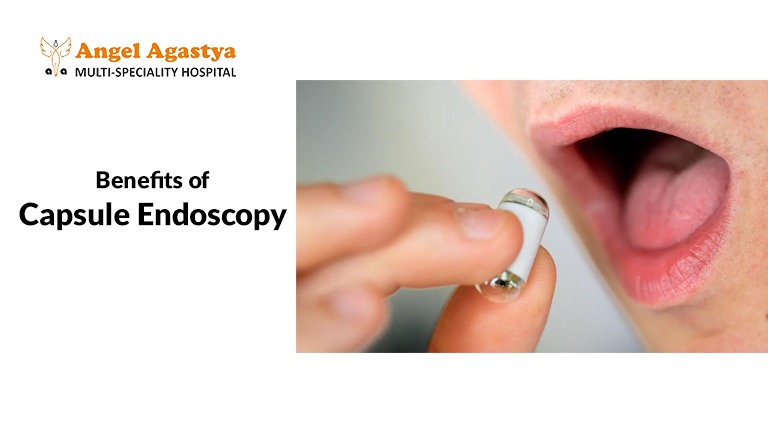
It offers numerous advantages, making it a preferred diagnostic tool in many cases:
1. Non-Invasive Procedure: Unlike traditional endoscopy, it doesn’t involve sedation, anesthesia, or insertion of instruments into the body. This makes it ideal for patients who are apprehensive about invasive procedures.
2. Comprehensive Imaging: The capsule provides a complete view of the small intestine, an area often inaccessible with other methods. This comprehensive imaging allows for better diagnostic accuracy.
3. Patient Comfort: Patients experience minimal discomfort during the procedure. Most can go about their daily activities while the capsule works its way through the digestive system.
4. Diagnostic Efficiency: Capsule endoscopy is highly effective in identifying issues like small bowel bleeding, tumors, and inflammation, enabling quicker diagnosis and treatment planning.
Applications of Capsule Endoscopy
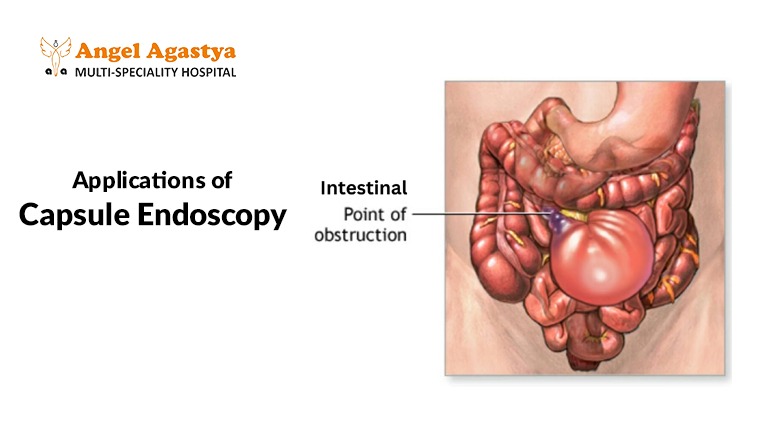
It has transformed how gastrointestinal issues are diagnosed and monitored. Below are some of its primary applications:
1. Small Bowel Disorders
- Detecting conditions such as inflammatory bowel disease and gluten sensitivity.
- Identifying benign or malignant tumors in the small intestine.
2. Unexplained GI Bleeding
- Locating the source of bleeding in cases where traditional methods fail.
- Providing clarity in diagnosing unclear and hidden gastrointestinal bleeding (OGIB).
3. Inflammatory Bowel Diseases (IBD)
- Monitoring the progression of conditions like Crohn’s disease and ulcerative colitis.
- Assessing the effectiveness of ongoing treatments.
4. Cancer Detection
- Early detection of cancers in the small intestine, which are often missed by other diagnostic tools.
5. Pediatric Use
Non-invasive diagnosis of GI conditions in children who might struggle with traditional endoscopy.
Preparing for Capsule Endoscopy
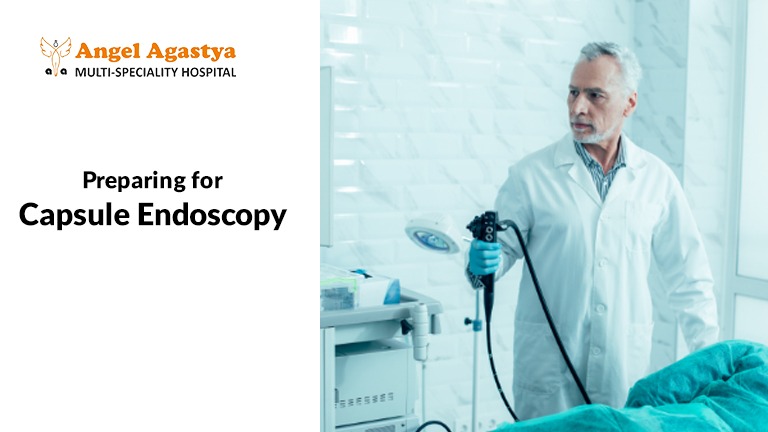
Proper preparation is essential for obtaining accurate results. Here’s how patients should get ready:
- Dietary Restrictions
- Avoid solid foods for 12-24 hours before the procedure.
- Stick to clear liquids as advised by the doctor.
- Medication Adjustments
- Inform your doctor about any medications you’re taking, especially those affecting blood clotting or the digestive system.
- Bowel Preparation
- Some patients may need a bowel-cleansing solution to clear the digestive tract for optimal imaging.
- Clothing
Wear loose-fitting clothing to accommodate the recording device comfortably
Limitations of Capsule Endoscopy
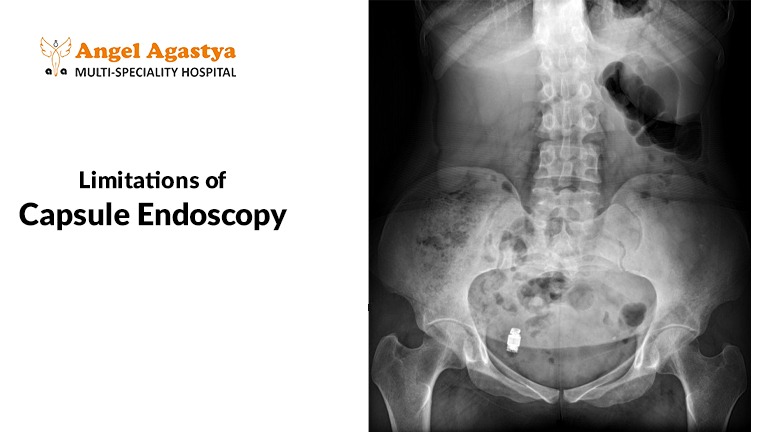
While it offers significant advantages, it also has certain limitations:
1. No Biopsy Capability
- The capsule cannot collect tissue samples. If a suspicious area is identified, a traditional endoscopy may be required.
2. Risk of Capsule Retention
- In rare cases, the capsule may get stuck in areas with strictures or blockages, requiring surgical removal.
3. Limited Use in Certain Patients
- Not suitable for patients with swallowing difficulties, intestinal obstructions, or implanted electronic devices like pacemakers.
4. Dependence on Battery Life
- The capsule’s battery life limits the recording time, which may not capture the entire journey through the GI tract in some cases.
Comparing Capsule Endoscopy to Traditional Methods
| Feature | Capsule Endoscopy | Traditional Endoscopy |
| Non-Invasive | Yes | No |
| Sedation Required | No | Yes |
| Biopsy Capability | No | Yes |
| Patient Comfort | High | Moderate to Low |
| Coverage | Entire small intestine | Limited |
Risks Associated with Capsule Endoscopy
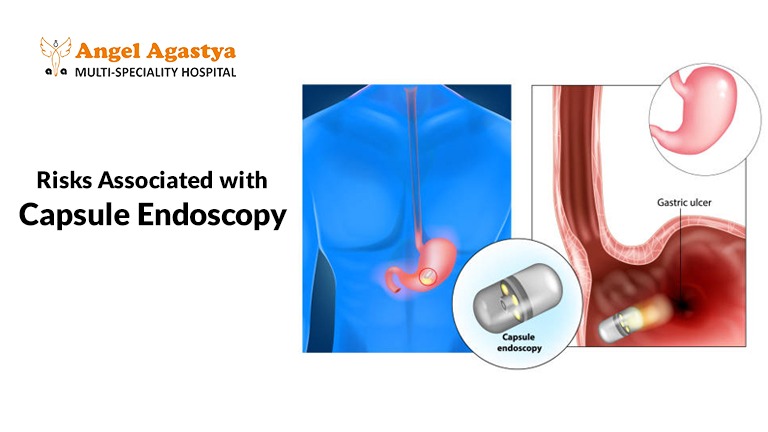
Although considered safe, capsule endoscopy does carry some risks, including:
- Capsule retention due to strictures or narrowing of the intestines.
- Incomplete examination if the capsule fails to pass through the digestive tract within the battery life.
- Rare allergic reactions to the materials used in the capsule.
Post-Procedure Guidelines
After the procedure, patients are advised to:
- Check if the capsule has passed naturally.
- Avoid MRI scans until the capsule is confirmed to have exited the body.
- Follow up with the doctor to discuss the results and next steps.
FAQs
- What is capsule endoscopy, and how does it work?
Capsule endoscopy is a non-invasive procedure that uses a pill-sized camera to capture images of your digestive tract as it passes through. - What conditions can capsule endoscopy diagnose?
It helps diagnose small bowel disorders like Crohn’s disease, celiac disease, gastrointestinal bleeding, and small intestine tumors. - How do I prepare for a capsule endoscopy?
Preparation typically involves fasting for 8-12 hours and possibly taking a laxative to clear the digestive tract for better imaging. - Is capsule endoscopy painful or uncomfortable?
No, it is painless and non-invasive. Most patients only feel the sensation of swallowing the capsule. - How long does a capsule endoscopy procedure take?
The procedure lasts about 8-12 hours as the capsule travels through your digestive system. - What happens to the capsule after the procedure?
The capsule is naturally excreted in your stool within 24-48 hours. It does not need to be retrieved. - Are there any risks associated with capsule endoscopy?
Capsule endoscopy is generally safe, but there’s a small risk of the capsule becoming stuck in narrowed sections of the intestine. - Can capsule endoscopy replace traditional endoscopy?
It complements traditional methods but cannot replace them when biopsies or therapeutic interventions are needed. - Who is not eligible for capsule endoscopy?
It may not be suitable for patients with swallowing difficulties, intestinal obstructions, or pacemakers due to technical constraints. - Is capsule endoscopy covered by insurance?
Most insurance plans cover it when deemed medically necessary. Check with your provider for specifics.
The Future of Capsule Endoscopy
Advancements in capsule technology continue to improve diagnostic capabilities. Future capsules may feature:
- Real-time imaging and live monitoring.
- Biopsy and therapeutic functionalities.
- Enhanced battery life and navigation systems.
Conclusion
Capsule endoscopy represents a leap forward in medical diagnostics, offering a non-invasive, patient-friendly option for evaluating gastrointestinal conditions. While it has some limitations, its benefits far outweigh its drawbacks, especially for those seeking a less intrusive diagnostic experience.
By staying informed about procedures like capsule endoscopy, patients can take proactive steps in managing their health, ensuring early diagnosis and effective treatment of gastrointestinal disorders.

